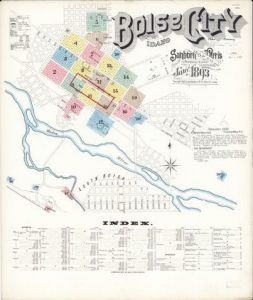Flood Insurance Rate Maps (FIRM)
The most widely distributed flood map is the Flood Insurance Rate Map (FIRM). It is produced and distributed by the Federal Emergency Management Agency.
Flood risk information presented on FIRMs is based on historic, meteorologic, hydrologic, and hydraulic data, as well as open-space conditions, flood control works, and development. To prepare FIRMs that illustrate the extent of flood hazard in a flood prone community, FEMA conducts engineering studies referred to as Flood Insurance Studies (FISs). Using information gathered in these studies, FEMA engineers and cartographers delineate Special Flood Hazard Areas (SFHAs) on FIRMs.
SFHAs are those areas subject to inundation by a flood that has a 1-percent or greater chance of being equaled or exceeded during any given year. This type of flood is referred to as a base flood. A base flood has a 26-percent chance of occurring during a 30-year period … the length of many mortgages. The base flood is a regulatory standard used by Federal agencies, and most states, to administer floodplain management programs, and is also used by the National Flood Insurance Program as the basis for insurance requirements nationwide.
A variety of information can be found on FIRMs, including:
- Common physical features, such as major highways, secondary roads, lakes, railroads, streams, and other waterways
- Special Flood Hazard Areas
- Base (1 percent annual chance) flood elevations or depths
- Flood insurance risk zones
- Areas subject to inundation by the 0.2 percent annual chance flood
- Areas designated as regulatory floodways
- Undeveloped coastal barriers
The Boise Public Library has FIRM’s for Ada and Boise County, Boise City and Twin Falls. Check Boise Public Library’s catalog for holdings. These maps are on the 3rd floor of the Main Library and must be used in the library.

Sanborn Fire Insurance Maps
Fire insurance maps are detailed city plans, usually at scales of 50 or 100 feet to an inch. They show individual building “footprints,” complete with construction details such as building material (brick, adobe, frame, etc.), height (of larger buildings), number of stories, location of doors, windows, chimneys and elevators, use of structure (dwelling, hotel, church, etc.), street address, and occasionally the ethnicity of the occupants. Other features shown include lot lines, street widths, water pipes, hydrants and cisterns, and fire-fighting facilities.
The maps were originally produced for insurance underwriters who used them to determine risks and establish premiums. Today these maps are used by scholars and researchers in such fields as history, urban geography, architectural history and preservation, ethnic studies, and urban archaeology.
Sanborn maps are available on microfilm at the Idaho State Archives. Search WorldCat using the terms sanborn fire insurance maps idaho to find additional holdings in libraries. They are available in microform, print, or in ProQuest’s Digital Sanborn Maps 1867-1970.
The Library of Congress has an extensive collection of Sanborn Maps. Some Idaho maps are digitized.
This page updated by Ronnie Joiner 5/1/2018.